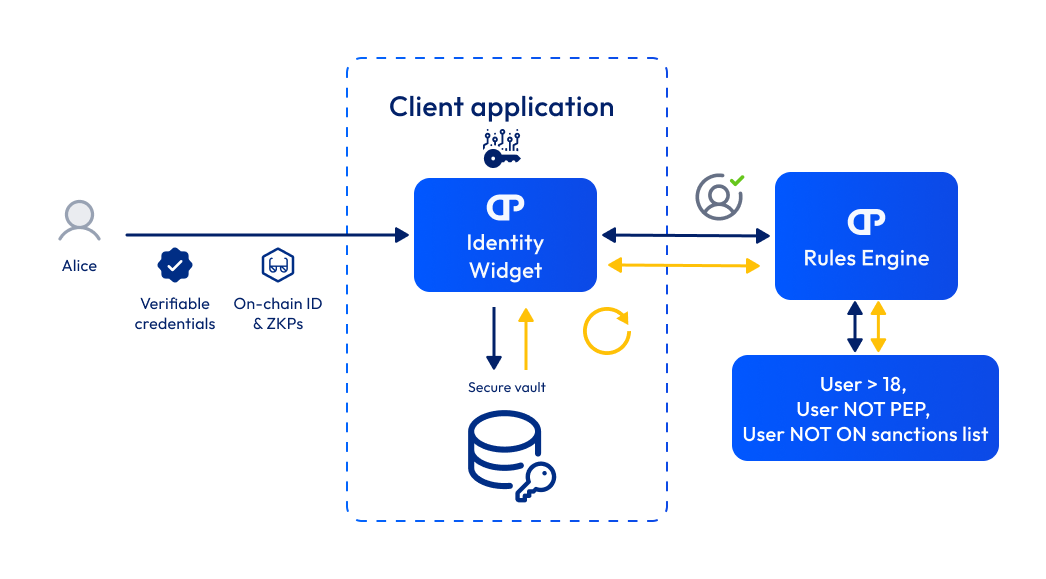ComPilot Rules Engine
The ComPilot Rules Engine allows you to define the compliance checks that a customer must pass before interacting with your application.
The compliance rules can be created from scratch, or from templates provided by ComPilot.
The ComPilot Rules Engine receives verifiable credentials (VCs) or zero-knowledge proofs (ZKPs) and checks them against the compliance rules. The application receives the rule execution result, allowing the application to allow or deny access to the customer.
The Rules Engine has two types of scenarios: VC-based, and ZKP-based. These are described in Scenario types.
The following diagram shows the ComPilot Rules Engine interacting with ComPilot KYC (through the ComPilot Identity Widget) and the client application.

Advantages
The ComPilot Rules Engine simplifies the compliance process. You can define custom rules based on your specific requirements, so that you can comply with regulatory frameworks. The compliance rules are configured through a dashboard, and they can be dynamically updated, changing who is allowed to access your application as your requirements and regulations change.
Continuous monitoring and auditing
The ComPilot Rules Engine generates decision logs for all policy decisions made within your systems. These logs can be used to monitor compliance in real-time and provide a clear audit trail for regulators. Additionally, they can be used for analyzing policy effectiveness and identifying potential gaps in compliance.
Adapting to regulatory changes
Since the technologies are flexible and extensible, they can be adapted to accommodate changes in regulations or the introduction of new requirements. As the regulatory landscape evolves, you can update your policies and credentials to remain compliant.
Using the Rules Engine
For information about using the Rules engine, see Rules Engine.